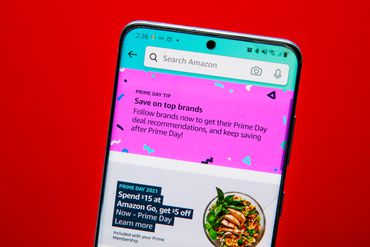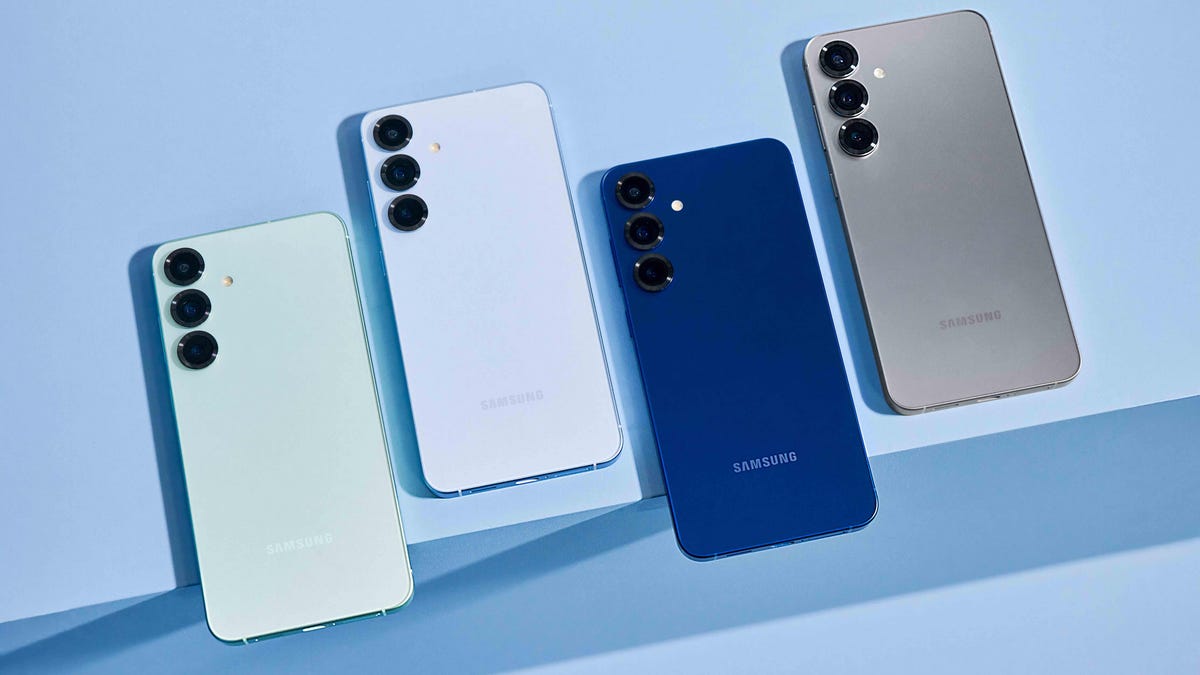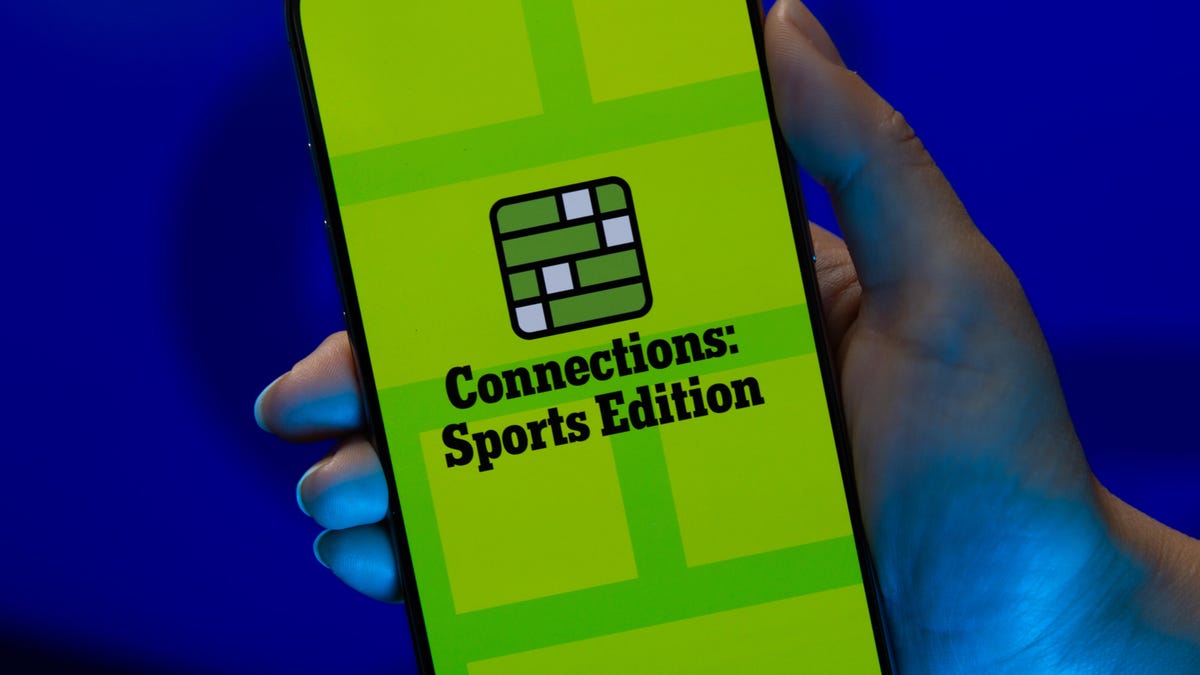Technologies
9 Amazon features you don’t know about that’ll help you save
You already know the basic perks: Prime Video, Prime Music and Prime’s free shipping. But there are other bonuses that can help you save big bucks.

Amazon has become the one-stop supplier for just about everything on your shopping list. But on top of two-day and even same-day shipping for Amazon Prime members, the trillion-dollar tech titan has dozens of services only a few clicks from the homepage. Some, like Amazon Prime Video and Prime Music, make headlines. Others get buried in the enormity of Amazon’s super site. We’re here to help uncover the best of the bunch so you don’t have to get lost in the search tool.
Amazon expanded its reach significantly during the pandemic — with visits to its site reportedly increasing by 37% from February 2020 to January 2021 — as it pushed new programs, including Amazon Sidewalk, the auto-on broadband-sharing program for Amazon Echo speakers and Ring devices. But its shopping experience continue to be the star of the show.
For avid Amazon shoppers, a massive heap of lesser-known features can land you stellar deals if you know where to look, including steep discounts on expensive items and free books. We’ve hacked through Amazon’s jungle of services to find the most useful (and surprising) Amazon programs that you can use today.
Read more: Amazon Prime Video: The 25 best films to see this week
1. Free reading using Prime Reading and Kindle Unlimited
Prime Reading is your own personal lending library that comes with a Prime membership. With a rotating selection of over 2,500 books and magazines, you can access Prime Reading with the Kindle app on your desktop or portable device or your Kindle e-reader. This Amazon service also lets you share titles with members of your household. Some books in Prime Reading come with Audible narrations so you can multitask while you listen.
Prime Reading also includes First Reads, which gives members a sneak peek at books before they’re released to the general public.
Kindle Unlimited is a $10-a-month subscription service separate from an Amazon Prime account. It gives you unlimited access to more than 1 million ebooks and up to three magazine subscriptions on a Kindle device or Kindle app.
2. Swap used devices for gift cards and shop discounted and preowned products
Amazon is boarding the train to sustainability station, and it’s something you can directly benefit from. With Amazon Trade-In, you can send back your used electronics in exchange for Amazon gift cards. Make sure to check on the eligibility of each product — some trade-in options are only available for a limited time.
Amazon Renewed gives you access to products that may have been opened but unused by their original owners, or were refurbished. Amazon assures that these preowned items work and look like new, coming with the Amazon Renewed Guarantee. A variety of products and brands are available, even from premium names like Apple and Vitamix.
3. Uncover discounts in the Amazon Warehouse
Amazon Warehouse resells millions of like-new or preowned items that have been returned by customers. Some of the products only had their boxes opened by original purchasers before they were sent back, unused, so they’re sold again at a discount. While there’s no regular manufacturing warranty on these products, they are backed by Amazon’s 30-day return policy and 90-day renewed item return policy.
To read more about how you can get the most out of Amazon Warehouse, check out our guide on shopping for the best deals on Amazon Warehouse.
4. Use the best deals on overstocked items in Amazon Outlet
Just like a brick-and-mortar outlet store, but without the gas money. The Amazon Outlet features overstocked items and other products at a discounted price. Like at an outlet, you can find premium brands, items under $10 and products ranging from home furniture and clothing to books and pet supplies. It’s a good place to stay within a budget while being the first owner, unlike some items in the Amazon Warehouse.
Keep in mind that although the online shopping experience is convenient, just like an outlet, the best deals sometimes take some sifting to find. Luckily, you can do it from the couch.
5. Land limited-time discounts using Lightning Deals
Amazon’s Lightning Deals are a promotion where a product or service is on sale for a short period of time or until it’s sold out. You can find them all throughout the site, but especially on Prime Day and in Today’s Deals. On Prime Day, Lightning Deals are only for Prime members.
There is one lightning deal per customer until the promotion ends or all the deals are claimed by other shoppers. You can join a waitlist for a deal, but keep in mind that these discounts are extremely time-sensitive, so grab them fast. Unless refreshing the page over and over is your thing, these deals aren’t necessarily the tool to find something specific because of their fleeting nature and limited availability.
6. Store pictures and videos with Amazon Photos
Amazon’s online shoebox for photos and videos offers secure and unlimited full-resolution photo storage plus 5 GB of video for Prime members. To use this feature, you can choose to manually or automatically upload media in the Amazon Photos app. You can personalize the displays on Amazon devices like Fire TV, Echo Show and Fire tablets as long as you have the app. There are also ways to create keepsakes using the pictures you upload, such as custom cards and prints.
With the Family Vault perk, up to five family members can share in the same plan. If you want more beyond what Prime offers, there are paid plans available. If you choose to switch — which can be done anytime — there is a 100GB option for $2 per month and 1TB plan for $7 per month.
7. Share Prime benefits with Amazon Household
Sharing is caring, and Amazon Household lets you divvy up Prime benefits and digital content with others. Using Household, share your Prime account with:
- Up to two adults (aged 18 and over), each with their own Amazon account. Adults can manage accounts of teens and children.
- Up to four teens (ages 13 through 17). Teens can have their own Amazon login to shop with parent approval and stream content.
- Up to four children (children can’t shop on Amazon).
8. Redeem discounts on Whole Foods hauls
Healthy shopping can rack up the number at the bottom of the receipt. But if you enter your email address, phone number or scan the QR code on your Whole Foods Market app at checkout during your next grocery haul, Prime members receive discounts on select products.
Blue tags indicate sales exclusive to Prime members, while yellow tags mean an extra 10% off of an item already on sale. This gets you discounts on weekly best-sellers, including produce, packaged goods and beauty products, but note that it excludes alcohol. The few cents saved on items may seem insignificant individually, but savings do add up at the end of the shopping trip.
Also, if you don’t want to make the trip across town, Amazon offers two-hour delivery of groceries for free, as long as you meet the minimum purchase amount. But if you don’t mind the drive, there are also one-hour pickup windows depending on your location — just remember to check in with the Amazon app to see if you need to enter the store.
9. Create an official wish list with Prime’s wedding registry
If the big day is coming up, Amazon’s wedding registry can get a gift wish list set up for everything from daily essentials to group presents. Amazon can help you cover all the gifting bases, and that makes it a convenient option for you and your wedding guests.
The registry includes lists of editors’ picks and best sellers to help you sort through Amazon’s options, while the browsing feature can inspire new ideas or highlight something you may have forgotten about. You can also buy any item that’s left on the registry for 20% off — which can be returned within 180 days if you decide you don’t like it.
For more, here are our picks for the best Alexa devices and which e-reader is right for you.
Technologies
Today’s NYT Mini Crossword Answers for Tuesday, Jan. 6
Here are the answers for The New York Times Mini Crossword for Jan. 6.

Looking for the most recent Mini Crossword answer? Click here for today’s Mini Crossword hints, as well as our daily answers and hints for The New York Times Wordle, Strands, Connections and Connections: Sports Edition puzzles.
Need some help with today’s Mini Crossword? The Across clues were tricky, but the Down clues helped me fill in the blanks. Read on for the answers. And if you could use some hints and guidance for daily solving, check out our Mini Crossword tips.
If you’re looking for today’s Wordle, Connections, Connections: Sports Edition and Strands answers, you can visit CNET’s NYT puzzle hints page.
Read more: Tips and Tricks for Solving The New York Times Mini Crossword
Let’s get to those Mini Crossword clues and answers.
Mini across clues and answers
1A clue: When pigs fly
Answer: NEVER
6A clue: Courtroom excuse
Answer: ALIBI
7A clue: «That’s a ___!» («Seems unlikely!»)
Answer: BIGIF
8A clue: Cash register compartment
Answer: TILL
9A clue: She, in French
Answer: ELLE
Mini down clues and answers
1D clue: Catch, as a crook
Answer: NAB
2D clue: Designation for prolific Yelp reviewers
Answer: ELITE
3D clue: Candlelight ___ (solemn observance)
Answer: VIGIL
4D clue: Online invoice
Answer: EBILL
5D clue: Piece of equipment in a Winter Olympics biathlon
Answer: RIFLE
Don’t miss any of our unbiased tech content and lab-based reviews. Add CNET as a preferred Google source.
Technologies
Samsung to Supercharge 800 Million Devices With AI This Year, Report Says
This could exacerbate the global RAM crunch.

Samsung is doubling the number of devices it’ll deliver with Galaxy AI this year to 800 million units, the company’s co-CEO TM Roh told Reuters on Monday.
Don’t miss any of our unbiased tech content and lab-based reviews. Add CNET as a preferred Google source.
«We will apply AI to all products, all functions and all services as quickly as possible,» Roh told Reuters.
Galaxy AI includes features like circle to search, live translate on phone calls, real-time translation, a writing assistant, generative photo editing and generative wallpaper.
The AI features are currently available on the Samsung Galaxy S25 series of phones, the Galaxy S24 series, the Galaxy S23 series; the Galaxy S23 FE, Galaxy S24 FE and Galaxy S25 FE; the Galaxy Z Fold 5, Z Fold 6 and Z Fold 7; the Galaxy Z Flip 5, Z Flip 6 and Z Flip 7; the Galaxy Tab S10 Plus, S10 Ultra and Galaxy Tab S11; and the Galaxy Tab S9 series.
Although Samsung is also a manufacturer of RAM, it is facing supply issues caused by exceedingly high demand resulting from the rise of AI.
«As this situation is unprecedented, no company is immune to its impact,» Roh told Reuters. The co-CEO also didn’t rule out price increases, but said he’s working with partners to find solutions.
A representative for Samsung didn’t immediately respond to a request for comment.
The AI push from Samsung comes during a memory chip crunch fueled by AI data centers, causing the cost of certain electronics to surge. Analysts predict that high demand and low supply will result in price increases across multiple product categories, including phones and cars.
AI systems require more RAM, which is why, for example, the iPhone 16 shipped with 16GB of RAM to power Apple Intelligence. The demand for power from AI data centers that run ChatGPT is so high that US memory manufacturer Micron killed off Crucial, its consumer RAM business, to pivot toward enterprise clients. Crucial had been around since 1996.
ChatGPT maker OpenAI will use up about 40% of DRAM output from South Korean firms Samsung and SK Hynix alone, according to Reuters. DRAM refers to Dynamic Random-Access Memory, the main working memory in computers, phones and servers, and AI relies heavily on it.
This memory crunch has reportedly left Google and Microsoft scrambling to secure supply for 2026, leading to firings and heated exchanges, according to South Korean publication Seoul Economic Daily. As a result, consumers may see devices with less RAM hit the market, reminiscent of products from years ago, such as 4GB smartphones and potentially 8-12GB graphics cards.
Technologies
Today’s NYT Connections: Sports Edition Hints and Answers for Jan. 6, #470
Here are hints and the answers for the NYT Connections: Sports Edition puzzle for Jan. 6, No. 470.

Looking for the most recent regular Connections answers? Click here for today’s Connections hints, as well as our daily answers and hints for The New York Times Mini Crossword, Wordle and Strands puzzles.
Today’s Connections: Sports Edition is a tough one. Remember that athlete surnames sometimes look like regular nouns, especially since Connections lists all its words in all caps, so you can’t tell if they’re a name or not. If you’re struggling with today’s puzzle but still want to solve it, read on for hints and the answers.
Connections: Sports Edition is published by The Athletic, the subscription-based sports journalism site owned by The Times. It doesn’t appear in the NYT Games app, but it does in The Athletic app. You can also play it for free online.
Read more: NYT Connections: Sports Edition Puzzle Comes Out of Beta
Hints for today’s Connections: Sports Edition groups
Here are four hints for the groupings in today’s Connections: Sports Edition puzzle, ranked from the easiest yellow group to the tough (and sometimes bizarre) purple group.
Yellow group hint: Go the other way.
Green group hint: Nothing but net.
Blue group hint: Fire it in there.
Purple group hint: Not front.
Answers for today’s Connections: Sports Edition groups
Yellow group: Change direction.
Green group: Basketball shot types.
Blue group: Active MLB pitchers.
Purple group: Back ____.
Read more: Wordle Cheat Sheet: Here Are the Most Popular Letters Used in English Words
What are today’s Connections: Sports Edition answers?
Don’t miss any of our unbiased tech content and lab-based reviews. Add CNET as a preferred Google source.
The yellow words in today’s Connections
The theme is change direction. The four answers are pivot, turn, veer and zig.
The green words in today’s Connections
The theme is basketball shot types. The four answers are alley-oop, fadeaway, floater and layup.
The blue words in today’s Connections
The theme is active MLB pitchers. The four answers are Cease, Crochet, Wheeler and Woo.
The purple words in today’s Connections
The theme is back ____. The four answers are board, field, stop and stretch.
-

 Technologies3 года ago
Technologies3 года agoTech Companies Need to Be Held Accountable for Security, Experts Say
-

 Technologies3 года ago
Technologies3 года agoBest Handheld Game Console in 2023
-

 Technologies3 года ago
Technologies3 года agoTighten Up Your VR Game With the Best Head Straps for Quest 2
-

 Technologies4 года ago
Technologies4 года agoBlack Friday 2021: The best deals on TVs, headphones, kitchenware, and more
-

 Technologies4 года ago
Technologies4 года agoVerum, Wickr and Threema: next generation secured messengers
-

 Technologies4 года ago
Technologies4 года agoGoogle to require vaccinations as Silicon Valley rethinks return-to-office policies
-

 Technologies4 года ago
Technologies4 года agoOlivia Harlan Dekker for Verum Messenger
-

 Technologies4 года ago
Technologies4 года agoiPhone 13 event: How to watch Apple’s big announcement tomorrow
